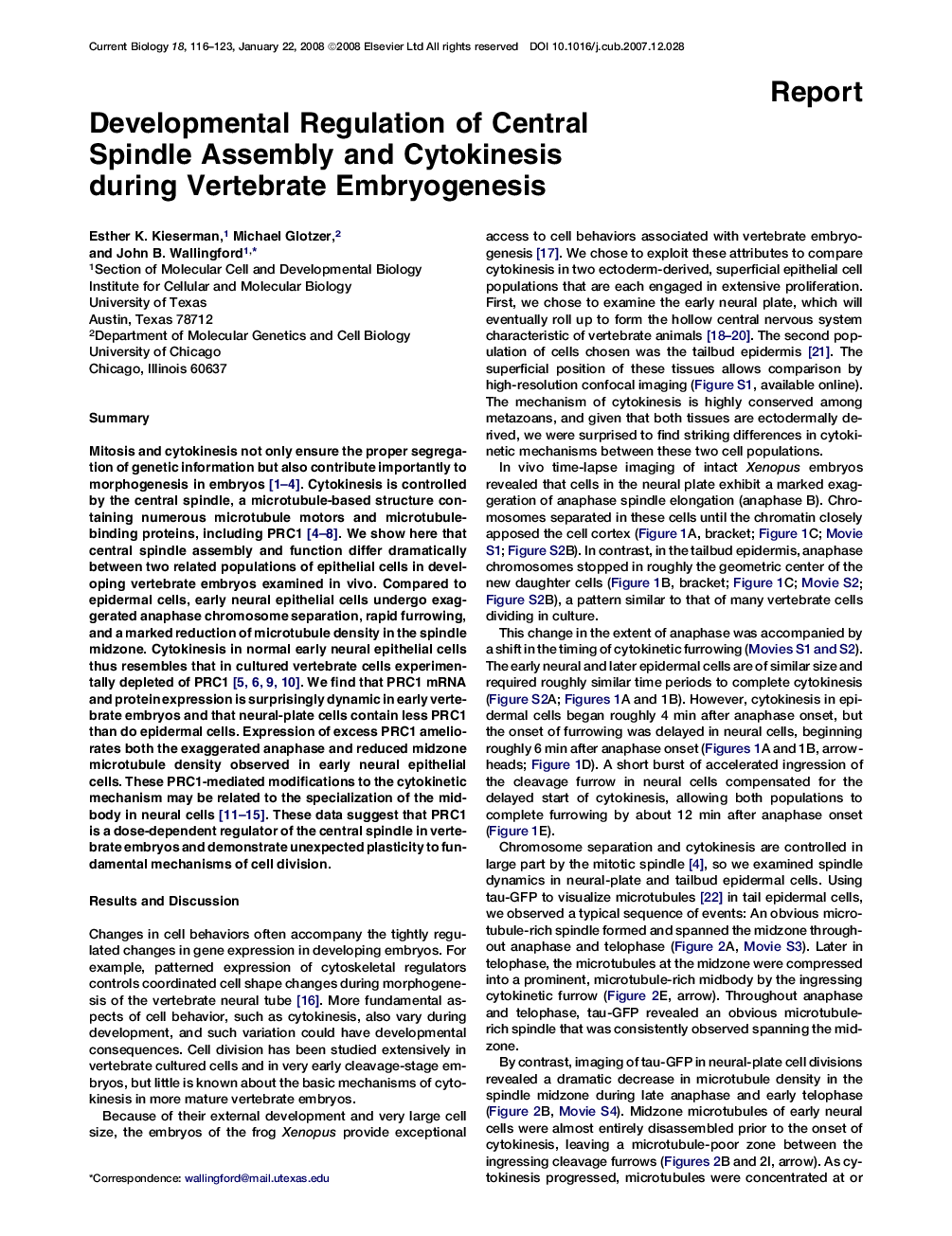| Article ID | Journal | Published Year | Pages | File Type |
|---|---|---|---|---|
| 2043734 | Current Biology | 2008 | 8 Pages |
SummaryMitosis and cytokinesis not only ensure the proper segregation of genetic information but also contribute importantly to morphogenesis in embryos 1, 2, 3 and 4. Cytokinesis is controlled by the central spindle, a microtubule-based structure containing numerous microtubule motors and microtubule-binding proteins, including PRC1 4, 5, 6, 7 and 8. We show here that central spindle assembly and function differ dramatically between two related populations of epithelial cells in developing vertebrate embryos examined in vivo. Compared to epidermal cells, early neural epithelial cells undergo exaggerated anaphase chromosome separation, rapid furrowing, and a marked reduction of microtubule density in the spindle midzone. Cytokinesis in normal early neural epithelial cells thus resembles that in cultured vertebrate cells experimentally depleted of PRC1 5, 6, 9 and 10. We find that PRC1 mRNA and protein expression is surprisingly dynamic in early vertebrate embryos and that neural-plate cells contain less PRC1 than do epidermal cells. Expression of excess PRC1 ameliorates both the exaggerated anaphase and reduced midzone microtubule density observed in early neural epithelial cells. These PRC1-mediated modifications to the cytokinetic mechanism may be related to the specialization of the midbody in neural cells 11, 12, 13, 14 and 15. These data suggest that PRC1 is a dose-dependent regulator of the central spindle in vertebrate embryos and demonstrate unexpected plasticity to fundamental mechanisms of cell division.
